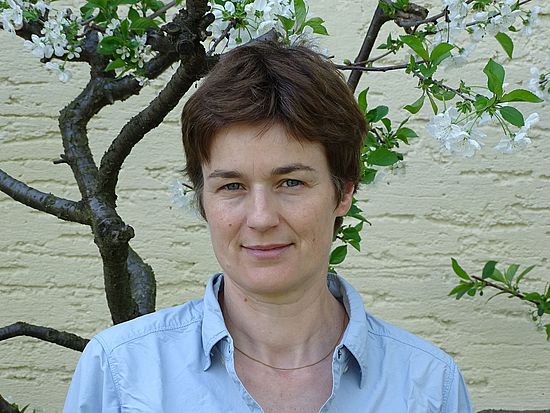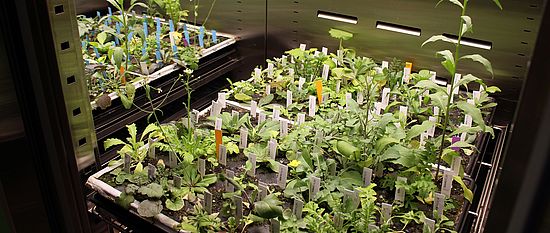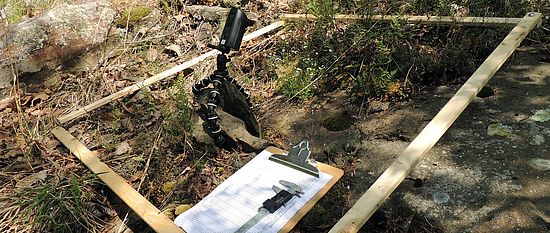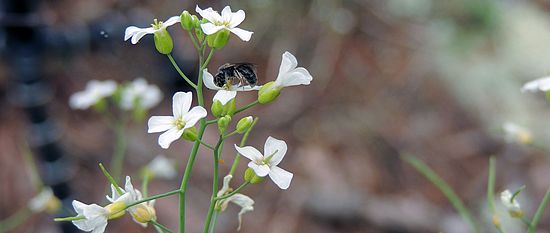Limits to the adaptive evolution process
Evolutionary Biology
The process of adaptive evolution – in the simplest models – occurs as long as selection acts on the population and there is heritable genetic variation for the trait under selection. However, many other proximate and ultimate factors can influence the process of adaptation. A past emphasis of my research has been the role of population size in determining quantitative genetic variation for ecologically relevant traits and the predicted response to selection. In a current project, we study the role of outcrossing and recombination on quantitative genetic variation and the response to selection. Furthermore, we explore how genetic correlations limit adaptation, and the role of environmental stress in adaptive evolution. Current investigations focus on Arabidopsis lyrata. Our work has a strong experimental component (selection experiments), but we also look at patterns of genetic variation and adaptation in natural populations of Arabidopsis lyrata in the Great Lakes region of North America.
Research topics
- Population genetics
- Quantitative genetics
- Conservation genetics
- Mating system evolution
Recent Publications
► Google Scholar: https://scholar.google.ch/citations?hl=en&user=AXk9cL8AAAAJ
Recent speciation associated with range expansion and a shift to self-fertilization in North American Arabidopsis.
Willi, Y., Lucek, K. & Walden, N.
Nature Communications DOI: 10.1038/s41467-022-35368-1 2022Cryptic population structure at the northern range margin of the service tree Sorbus domestica.
Armbruster, G.F.J., Lucek, K. & Willi, Y.
PeerJ DOI: 10.7717/peerj.14397 2022Intraspecific variation in reproductive barriers between two closely-related Arabidopsis sister species.
Perrier, A. & Willi, Y.
Journal of Evolutionary Biology DOI: 10.1111/jeb.14122 2022Environment dependence of the expression of mutational load and species’ range limits.
Perrier, A., Sánchez-Castro, D. & Willi, Y.
Journal of Evolutionary Biology 35, 731–741. 2022Trait divergence and trade-offs among Brassicaceae species differing in elevational distribution.
Maccagni, A. & Willi, Y.
Evolution 76, 1986–2003. 2022Reduced pollinator service in small populations of Arabidopsis lyrata at its southern range limit.
Sánchez-Castro, D., Armbruster, G. & Willi, Y.
Oecologia 200, 107–117. 2022Reduced climate adaptation at range edges in North American Arabidopsis lyrata.
Sánchez-Castro, D., Perrier, A. & Willi, Y.
Global Ecology and Biogeography 31, 1066–1077. 2022Trade-offs at the warm end and cold end of species distribution.
Willi, Y. & Van Buskirk, J.
Philosophical Transactions of the Royal Society London B 377, 20210022. 2022Conservation genetics as a management tool: The five best-supported paradigms to assist the management of threatened species.
Willi, Y., Kristensen, T.N., Sgrò, C.M., Weeks, A.R., Ørsted, M. & Hoffmann A.A.
Proceedings of the National Academy of Sciences of the USA 199, e2105076119. 2022Niche breadth and elevational range size: a comparative study on Middle-European Brassicaceae species.
Maccagni, A. & Willi, Y.
Philosophical Transactions of the Royal Society London B 377, 20210005. 2022- What drives species' distributions along elevational gradients? Macroecological and -evolutionary insights from Brassicaceae of the central Alps
Patsiou, Theofania-Sotiria; Walden, Nora; Willi, Yvonne
Global Ecology And Biogeography 10.1111/geb.13280 MAY 2021 - Drivers of linkage disequilibrium across a species' geographic range
Lucek, Kay; Willi, Yvonne
Plos Genetics 10.1371/journal.pgen.1009477 Published: MAR 2021 - Expressed mutational load increases toward the edge of a species' geographic range
Perrier, Antoine; Sanchez-Castro, Dario; Willi, Yvonne
Evolution DOI: 10.1111/evo.14042 AUG 2020 - …

Prof. Dr. Yvonne Willi
University of Basel
Department of Environmental Sciences – Botany
4056 Basel
Tel: +41 (0)61 207 23 20
Links
Interdisciplinary
- Conservation: fate of small populations under environmental change
- Genetic variation and adaptability in plant pathogenic fungi
- Mating system evolution and the evolution of selfish genetic elements
- Life history evolution, genetic trade-offs and genetic correlations



